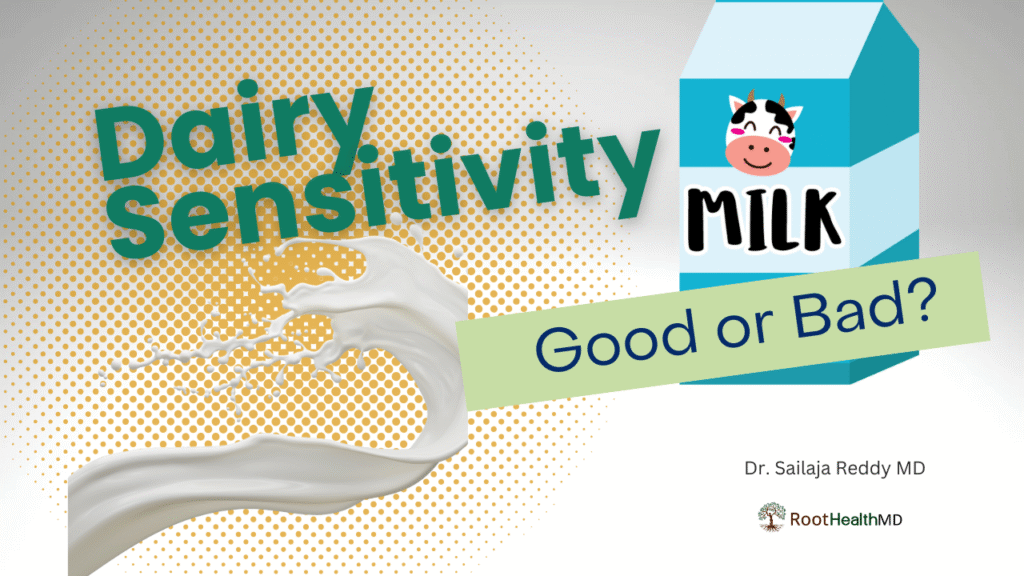
For generations, milk was seen as the ultimate health food — rich in calcium, protein, and “nature’s perfect nourishment.” Yet today, many people struggle to tolerate it. So what changed? Let’s break down the science behind dairy sensitivity, the difference between intolerance and allergy, and why modern milk may not sit well with your gut or immune system.
🥛 Milk Composition — What’s Really in Your Glass?
Cow’s milk is made up of about 87% water and 13% solids.
The solid portion includes:
- Sugar (44%) – mostly in the form of lactose
- Fat (24%) – varies depending on type (whole, 2%, 1%, or skim)
- Protein (24%) – composed mainly of casein (80%) and whey (20%)
This means even if you choose low-fat or lactose-free milk, you may still react to the protein portion (casein or whey), which often triggers immune or inflammatory responses.
🚨 Dairy Sensitivity vs. Dairy Allergy
These two are often confused, but they’re very different in mechanism and severity:
- Dairy Allergy is an immune reaction — your body recognizes milk proteins (usually casein or whey) as harmful and mounts an antibody (IgE) response. Symptoms can include hives, swelling, wheezing, or even anaphylaxis.
- Dairy Sensitivity or Intolerance is a digestive or immune imbalance, not a true allergy. Common examples:
- Lactose intolerance: due to low lactase enzyme levels, leading to gas, bloating, or diarrhea.
- Casein or whey sensitivity: can cause inflammation, fatigue, sinus congestion, acne, or digestive issues even if lactose-free.
In functional medicine, we often see casein sensitivity linked to gut permeability (“leaky gut”), which can perpetuate immune activation and systemic inflammation.
🧬 A2 Milk vs. Common A1 Milk
Most commercial cow’s milk comes from cows producing A1 beta-casein, a protein variant that, during digestion, releases a peptide called BCM-7 (beta-casomorphin-7).
BCM-7 has been associated with:
- Gut inflammation
- Mucus production
- Neurological symptoms in sensitive individuals
A2 milk, on the other hand, comes from specific breeds (like Jersey or Guernsey cows) that produce only A2 beta-casein, which does not form BCM-7 and is often better tolerated.
Some people who react to regular milk can tolerate A2 milk without issues.
🐐 Dairy Milk vs. Other Mammalian Milk
Different animal milks have distinct protein and fat structures:
- Goat and sheep milk have smaller fat globules and different casein structures, making them easier to digest.
- Buffalo milk is richer in fat and protein but may still cause issues for sensitive individuals.
- Camel milk lacks beta-lactoglobulin (a major allergen in cow’s milk) and is often tolerated better, even in children with dairy allergy.
Each milk type varies in lactose content, protein structure, and immune reactivity, which is why some people tolerate goat or camel milk but react to cow’s milk.
⏳ Why Is Milk a Problem Now When It Wasn’t Before?
Several modern factors have altered how our bodies respond to dairy:
- Processing methods: Pasteurization and homogenization change the structure of fats and proteins, making them more antigenic (immune-reactive).
- A1 cows dominate dairy farms: Older breeds producing A2 milk have largely been replaced.
- Feed and environment: Cows today are often fed grains and soy, altering their milk’s fatty acid profile and adding hormone or pesticide residues.
- Gut health decline: With widespread antibiotic use, stress, and processed diets, our microbiomes are more fragile — reducing tolerance to complex foods like dairy.
- Overconsumption: Milk is now found in processed foods, protein shakes, and baked goods, increasing total exposure.
🧠 How Dairy Affects the Gut and Immune System
In sensitive individuals, dairy proteins can:
- Increase gut permeability, allowing food particles and toxins to “leak” into circulation.
- Trigger inflammation and mucus production in the sinuses, lungs, and GI tract.
- Alter microbiome balance, especially when combined with sugar (lactose) and processed dairy additives.
- Promote immune dysregulation, contributing to autoimmune, skin, or respiratory issues.
Symptoms can be subtle — chronic sinus congestion, bloating, acne, or fatigue — and often improve dramatically when dairy is reduced or eliminated for a few weeks.
🌿 The Takeaway
Dairy can be a nutrient-dense food for some and a source of inflammation for others. The key is personalization:
- Try a 4–6 week dairy elimination to assess symptoms.
- Reintroduce slowly, starting with A2, goat, or sheep milk if desired.
- Pay attention to your body — your gut often speaks before lab tests do.
In functional medicine, the goal isn’t to label foods as “good” or “bad,” but to identify what’s best for your unique biochemistry and microbiome.
✨ Final Thought
Healing the gut often improves dairy tolerance — but until the gut barrier and microbiome are restored, dairy may be better avoided. Your body’s reaction to food is feedback, not failure.


